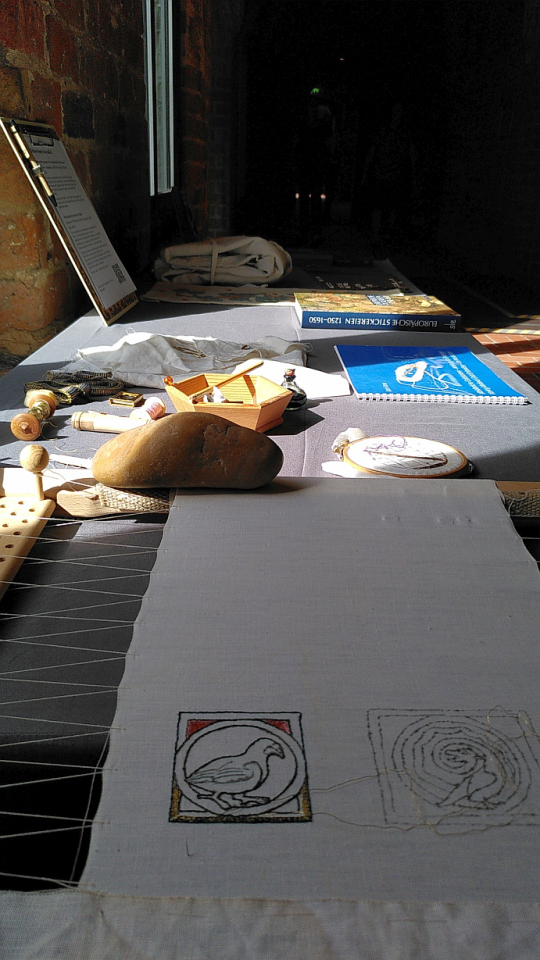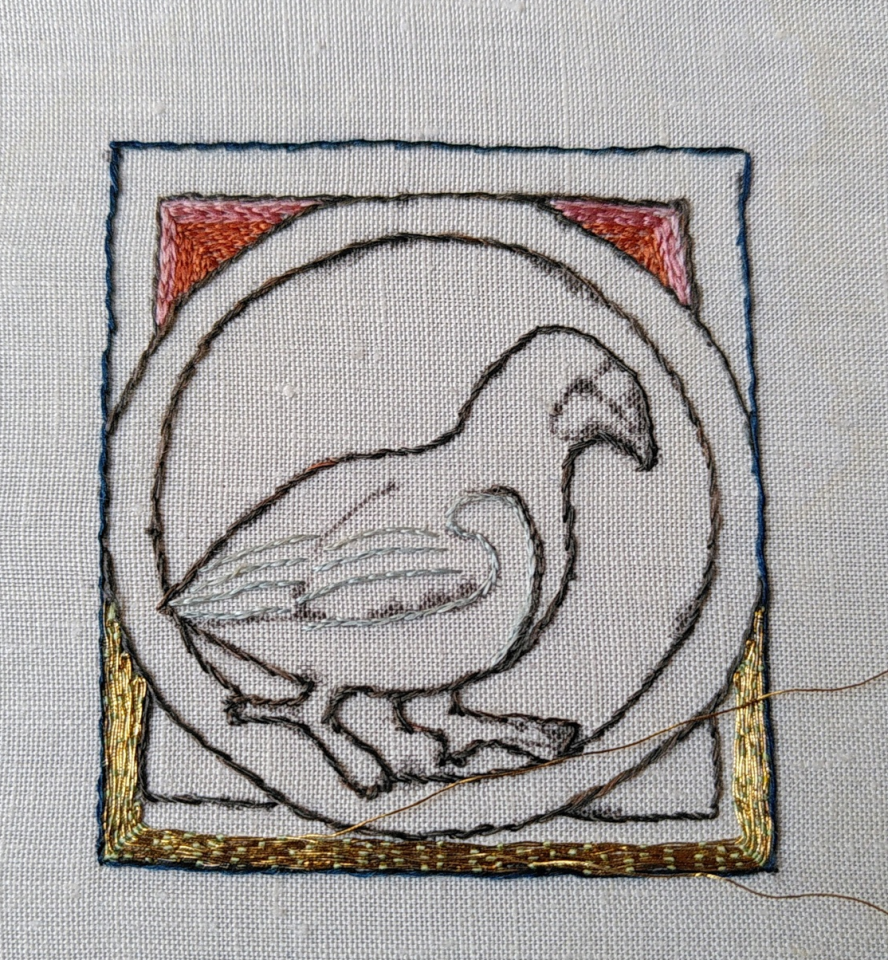Search the Blog
Latest Comments
Home Again!
I'm home again after the absolutely wonderful weekend at the Archäotechnica. It was lovely to have a museum event again after such a long pause due to the pandemic. I got to meet old friends and get to know new people, and realised how much I missed all this.
My work space was in the cloister, where I had very good light, but not too much of it - at least most of the time; on Sunday around noon, I had a bit of direct sun, and it was very hot and very bright and hard to see what I was doing.
I also realised that I have a very, very hard time stitching and speaking at the same time. So even though there were very few and very short breaks only, the amount of stitching that got done was... well, let's say that there was no danger at all that I'd run out of embroidery work.
The gold in the picture is the result at the end of 7 hours of demonstration time - not at all to be confused as the result of 7 hours of embroidery time!
A demo situation is always different from a proper work situation, even if the technique you demonstrate is one that needs very little attention. Your main focus, as a good demonstrator, will always be on the people coming and asking questions, or watching, and not on your work piece. So you stop things to explain, you work slower if necessary, you demonstrate mistakes or point out possible problems (in some cases making them happen on purpose), and your main aim is explaining things and not having a perfect piece at the end. (The gold embroidery quality is also not what I'd reasonably expect from myself as the result of a normal stitching session.)
Even when I'm doing a very low-demand technique such as combing wool, or spinning, I can feel a difference in how the work goes that I'm doing on a demo as opposed to doing it as work. (It's fascinating, really.) In my experience, there's techniques and things that need little or no brain, and little or no attention, and they are best suited for demonstration purposes. With these techniques, I can look at the people passing by, make eye contact, and talk to them without interrupting the work. Spinning would be one of these; netting also works very well in my experience.
Techniques that need no brain, but focus on the work and attention are the other group of techniques where a demo is possible. These, which include anything involving stitching, are more difficult - as soon as you look like you are concentrating on something, quite a lot of people have qualms to ask something. I've had a lot of "may I ask you something" questions this weekend, and I am actually considering putting up a sign next time that says some thing like "do ask me things, that's what I am here for". I do try to stop and look up at my surroundings when I am demo-ing a high-focus technique, but it takes more effort from my end to demo this successfully and with similar amounts of interaction than a low-focus technique.
The third group are techniques that need attention and focus as well as brain power. These are right out for demo purposes in my opinion. I just cannot give a proper impression of how something demanding is done and concentrate on getting the hows and whys across to visitors at the same time. So I'd never do a demo on complicated tablet-woven patterns, for instance. That requires all my attention, and I'd either not talk to people or weave with lots of errors and very badly.
This is also something that I explain to museums and event organisers when we're discussing possibilities for demonstrations. Usually we then find a technique that fits the event and that is suitable for a good demo. After all, a demo of the coolest and most astonishingly complicated technique serves nobody if it's just not working properly for the public.
Have you done demonstrations? Are your experiences similar?
Comments 2
Absolutely agree. I think there may also be something in there about body language. Distaff spinning has such an open, outward-facing body language compared to something like hand-sewing. I feel people are way, way, way more likely to come over and interact with me when I'm spinning than when I'm doing anything else.
I can relate to the sentiment. When demonstrating medieval hairdressing it is sometimes difficult to complete your task while explaining, but it is way easier than sewing or embroidering.
This year at Archäotechnica it was quite busy. However, it was a pleasure seeing you again after such a long time.





